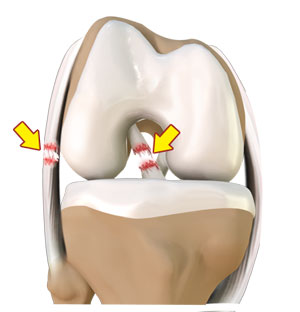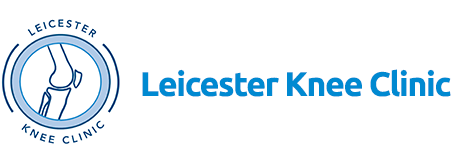
What are Multiligament Knee Injuries?
Injury to more than one knee ligament is called a multiligament knee injury and may occur during sports or other physical activities.
Knee Joint Anatomy
The knee joint is one of the largest and complex joints in your body. The joint is connected to your thigh bones and bones of the lower leg by various ligaments. The bones which meet to form your knee joint are the kneecap (patella), the thigh bone (femur) and shinbone (tibia).
The ligaments of the knee joint are:
- Anterior Cruciate Ligaments (ACL)
- Posterior Cruciate Ligaments (PCL)
- Medial Collateral Ligaments (MCL)
- Lateral Collateral Ligaments (LCL)
- Ligaments of the Posterolateral Corner (PLC)
Symptoms of Multiligament Knee Injuries
The symptoms vary with the severity of the injury. They include:
- A loud popping sound occurring during injury
- Knee swelling
- A feeling of looseness in the knee joint
- Knee pain that may be sudden and severe
- Pain with weight bearing on the injured knee
Types of Multiligament Knee Injuries
Multiligament knee injuries may be mild or severe. Mild sprains do not damage the stability of the joint. A tear in the ligaments may be partial or complete. Partial tears cause loosening of the joint whereas, complete tearing of the ligament causes the joint to be unstable.
Diagnosis of Multiligament Knee Injuries
Mr Ghosh physically examines the knee joint and its mobility. Mr Ghosh may order an X-ray to rule out a fracture and an MRI to identify the injured ligaments.
What Happens if Multiligament Knee Injuries are Left Untreated?
Multiligament knee injuries need immediate evalutaion and treatment. In severe cases they may result in disruption of blood supply to the knee.
Treatment of Multiligament Knee Injuries
Mr Ghosh will suggest various non-surgical methods to treat multiligament knee injuries when possible. Surgery is an option if you do not respond to conservative treatment measures or when conservative management is deemed an inferior option.
Non-Surgical Treatment
You may respond to non-surgical treatment and recover from the injury if the damage occurs to the collateral ligaments on the outside and inside of your knee.
Icepacks may be used every 3-4 hours to reduce pain and swelling.
Stabilize your knee joint with a compression bandage and wearing a brace.
Your doctors may prescribe medications to reduce pain and swelling.
Strengthening exercises are necessary to stabilize your joint. Your physiotherapist will plan the types of exercise based on the severity of your injury.
Surgical Treatment
Damaged cruciate ligaments usually will need surgery. Usually, reconstruction surgery is performed. A diagnostic arthroscopy is performed by your surgeon to view the injured parts. A graft tissue is used from your body or a donor to perform the reconstruction.
Post-operative Rehabilitation
Post-surgery rehabilitation involves the immobility of the joint for a period. Partial weight bearing exercises may be started early with the weight gradually increased. A physiotherapist will plan your exercise strategy. Complete recovery and return to usual activities (e.g. sports) may take up to 9 months.
Prevention of Multiligament Knee Injuries
Injuries to the knee are common in sports. The stability of the knee joint is completely dependent on the ligaments and the muscles. People involved in sports may prevent knee injuries by following these simple measures:
- Practice strengthening exercises to improve knee stability.
- Always maintain good flexibility of your legs with stretching exercises.
- Slowly increase the intensity of your workouts as excess stress may damage the knee ligaments.
Related Topics:
- ACL Tears
- Articular Cartilage Injury
- Fractures of the Patella
- Fractures of the Tibia
- Jumper's Knee
- Knee Arthritis
- Knee Fracture
- Knee Injury
- Knee Pain
- Knee Sports Injuries
- Knee Sprain
- Ligament Injuries
- Meniscal Injuries
- Meniscal Tears
- Multiligament Instability
- Multiligament Knee Injuries
- Patella Fracture
- Patellar Dislocation
- Patellar Instability
- Patellar Tendinitis
- Patellofemoral Instability
- Runner's Knee
- Unstable Knee
